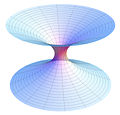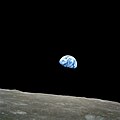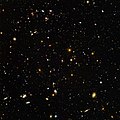Talk:Symphony of Science
| This article is rated Start-class on Wikipedia's content assessment scale. It is of interest to the following WikiProjects: | ||||||||||||||||||||||||||||||||||||||||||||||||
| ||||||||||||||||||||||||||||||||||||||||||||||||
|
Image queue
[edit]FYI
[edit]Musician Carrie Brownstein found the idea behind Symphony of Science "quite beautiful and amazing in both its sincerity and aims". She also enjoyed the "hip-hop stylings" of the camera angle on Bill Nye while he is gesticulating in "We Are All Connected".[9]
- For future reference, as the page history shows, I wrote this[2] a week before it was covered in The Boston Globe using my wording (probably coincidental).[3] So, this isn't copyvio. Viriditas (talk) 10:30, 1 November 2009 (UTC)
- I've changed it, in any case.[4] Viriditas (talk) 10:59, 1 November 2009 (UTC)
John Boswell
[edit]Wouldn't it make more sense to create a page for him and move it there, instead of having a biography on a work of his? —Preceding unsigned comment added by Vincetti (talk • contribs) 17:52, 8 November 2009 (UTC)
- No, because at this time, he is primarily known for the mashups, not for his original compositions or his original music as Colorpulse. While this might not sound convincing to you, the problem is, most, if not all of the reliable sources on this subject with the exception of Boswell's own, personal biography on his website, discuss Boswell's video in terms of the scientists and video images. I've discussed my reasoning in more detail here and here, and at least one other user (User:Superswade) agrees with you. The problem is, we just don't have enough to source a biography at this time, only content about the music related to the Symphony of Science project, which is why I chose this name and merged all the content here. When we start seeing major media reports talking about Boswell, his career as a musician, his upbringing, and published recordings (or any of those things) we'll have more to go on. Right now, regarding biographical data, all we have his personal website,[5] a very brief mention of the name of his high school in his local paper[6], and well, that's just about it. Every other source discusses the music related to the Symphony of Science project. I don't think this is enough for a separate biography article, do you? Viriditas (talk) 08:36, 10 November 2009 (UTC)
- While I do see where you're coming from, saying that there is not enough information about him in order to create a separate article, but is it really the quantity of information available on the person? Wikipedia is a free encyclopedia, correct?-Vincetti (talk) 00:24, 11 November 2009 (UTC)
- One could make an argument either way using WP:ANYBIO, WP:MUSICBIO, WP:MOSBIO, WP:MUSICIAN, Wikipedia:WikiProject Musicians/Article guidelines, WP:POTENTIAL, and WP:MERGE, but at this time there are few if any reliable sources about John Boswell, which is why we have this article instead. Once we get our hands on good sources (not trivial mention) about Boswell, we can create a biography. Otherwise, we will have a short stub with anywhere from 1-3 sources, and that could be deleted. If you like, we can take this issue to the wider community by filing a report at WP:BLP/N or Wikipedia:Content noticeboard. We could also start an article RfC. Viriditas (talk) 04:56, 11 November 2009 (UTC)
- I don't really want to bother the community with this small thing. I mean, this is like putting a biography about an author in a work of his because the publishers don't want to waste an entire new book. -Vincetti (talk) 21:10, 15 November 2009 (UTC)
- One could make an argument either way using WP:ANYBIO, WP:MUSICBIO, WP:MOSBIO, WP:MUSICIAN, Wikipedia:WikiProject Musicians/Article guidelines, WP:POTENTIAL, and WP:MERGE, but at this time there are few if any reliable sources about John Boswell, which is why we have this article instead. Once we get our hands on good sources (not trivial mention) about Boswell, we can create a biography. Otherwise, we will have a short stub with anywhere from 1-3 sources, and that could be deleted. If you like, we can take this issue to the wider community by filing a report at WP:BLP/N or Wikipedia:Content noticeboard. We could also start an article RfC. Viriditas (talk) 04:56, 11 November 2009 (UTC)
- While I do see where you're coming from, saying that there is not enough information about him in order to create a separate article, but is it really the quantity of information available on the person? Wikipedia is a free encyclopedia, correct?-Vincetti (talk) 00:24, 11 November 2009 (UTC)
#1 top rated video of all time
[edit]Boswell's video(s) were rated at the #1 top rated videos of all time on YouTube, but their ranking has since fluctuated below #1. They are still listed as top rated videos of all time in those categories, and their current rankings appear in the statistics categories on their respective pages. Viriditas (talk) 05:03, 5 December 2009 (UTC)
- Right, well, unless a reference can be found that it was once at #1, the fact fails verifiability. --Cybercobra (talk) 05:24, 5 December 2009 (UTC)
- Not really. It is currently listed as a "top rated video" in the YouTube stats, and it reached number 1 between September and November. The question at hand is when did it reach number one and how long did it hold that spot? There are records for these things. The fact remains it is still a top-rated video. Viriditas (talk) 06:16, 5 December 2009 (UTC)
- Fine, then find the record. Where is this stats page you're referring to? --Cybercobra (talk) 06:27, 5 December 2009 (UTC)
- I think you are making this out to be more important than it sounds. The video held the number one spot in this category for so long, it is not even in question. It is still "honored" as a top rated video of all time in the statistics & data tab of the video itself.[7] Whether this implies that it was number one at some point is also not clear.[8] The current rank within that rating can change daily, and it is currently at #4. It's best to just leave the number out for now, since it appears to bother you. For the record, there are dozens of discussions about the #1 ranking in the comments. Boswell has not made the actual YouTube stats for this particular video public, but I think he simply forgot to activate it in his preferences, because his other videos, like "We Are All Connected", have the actual stats in view. I'm not clear if the back end view (called "YouTube Insights") shows the date the video first went number 1 as a top rated video, but I assume it doesn't matter because the rank can fluctuate a great deal. It should also be noted that the YouTube stats are somewhat new, and the page views are considered a more important number than the honor ranking. There are also external sites that measure YouTube stats, but they are usually subscription-based. From what I can tell, the video was ranked #1 in the top rated videos of all time from the last week of October until the first or second week of November, at which point it dropped down to 2 and is now at 4. So, I suggest removing the fluctuating ranking for now, but leaving the top-rated category, since that it easily verified. At any rate, I've gone ahead and made the change. Viriditas (talk) 10:48, 5 December 2009 (UTC)
- Fine, then find the record. Where is this stats page you're referring to? --Cybercobra (talk) 06:27, 5 December 2009 (UTC)
- Not really. It is currently listed as a "top rated video" in the YouTube stats, and it reached number 1 between September and November. The question at hand is when did it reach number one and how long did it hold that spot? There are records for these things. The fact remains it is still a top-rated video. Viriditas (talk) 06:16, 5 December 2009 (UTC)
Disambiguation
[edit]Created this page: http://en.wiki.x.io/wiki/John_Boswell_%28disambiguation%29 Also disabled redirect from John Boswell. There are multiple John Boswell musicians and it is inappropriate to redirect to only the Symphony of Science one. -PaulBHartzog —Preceding undated comment added 06:47, 30 December 2009 (UTC).
- That wasn't necessary. We only create disambiguation pages for articles on Wikipedia. Currently, Symphony of Science is the only article on the musician. When you have an actual working article about the other Boswell, then we might need it. Until then, I've restored the redirect per WP:DAB. Viriditas (talk) 08:41, 30 December 2009 (UTC)
Scientific error!!
[edit]"The Secret of the Stars" episode of the symphony of science says that "energy turns into mass". This is exactly opposite to what really happens. Mass turns into energy. Stars get lighter as they fuse hydrogen into helium. They don't suck up energy and get heavier (as energy into mass would imply).
Can this *please* be corrected somewhere by someone? Surely someone here must know a physicist who could confirm what I am saying and add a small caveat to the entry for this episode. Science is about being willing to confront errors in thinking, even if they are expressed in cool songs.
Maybe I'll add in a small note and see what happens.
Thanks.
Lehasa (talk) 03:39, 28 November 2013 (UTC)
- Conversions between mass and energy can go in both directions. Tayste (edits) 05:00, 28 November 2013 (UTC)
I know that it can happen both ways, but this does not happen in stars -- and this whole episode is about how stars shine. If it did not happen like this (i.e. mass to energy) then the stars would not shine. The way that the song states it is wrong, incorrect, and misleading. It's hard to believe that no one has caught this error.
How do you think that this should be addressed? Lehasa (talk) 16:25, 28 November 2013 (UTC)
Since no one is fixing this, I'm restoring my previous edit, but improving the wording. You guys do realize that people read Wikipedia and try to learn science from it. Even if someone as great as Michio Kaku says that energy turns into mass to power stars, it's still wrong. Completely incorrect. That's the power of science - just because you're famous doesn't mean that you are always right and can never be corrected by lowly mortals.
If you don't like my edit, please reword it in a suitable fashion, but make sure that it corrects the error in nuclear physics. Lehasa (talk) 22:04, 10 September 2014 (UTC)
Actually, energy does turn into mass. Stars do not get lighter, they get heavier. Why?
Because fundamentally, protons and neutrons are made of quarks. Up and down quarks. And the down quark is about twice as massive as the up quark. The process that powers the stars involves an up quark emitting a W+ boson, causing it to change into a down quark. The W+ decays into a positron and neutrino, and the positron annihilates with an electron to produce 1.022 MeV of energy, in the form of two 511 keV gamma photons.
Protons have an energy of about 938 MeV, and neutrons have an energy of about 940 MeV. Most of this energy is the binding energy of gluon exchanges between the quarks. Only 9.4 MeV of mass is carried by the quarks in the proton, and only 11.9 MeV of mass is carried by the quarks in the neutron.
The proton-proton chain reaction (which relies on the weak force process of W+ emission and decay) involves this:
proton (938 MeV) + proton (938 MeV) --> deuterium (proton+neutron, 1878 MeV) + neutrino + 1.022 MeV (2 x 511 keV gamma photons)
Energy of the high temperatures and pressures at the core of a star go toward changing this up quark into a down quark. The 2.5 MeV difference in mass becomes two particles, a positron and a neutrino. 511 keV of that is the mass of the positron, a small amount goes toward the mass of the neutrino, then the rest of the energy is the momentum of those two particles. The positron, carrying 511 keV of mass, annihilates with an electron, and produces 1.022 MeV of radiation. Overall, this process raised the mass of the star by 2.5 MeV and then lowered it by 511 keV, so overall, the star produced 1.022 MeV of radiation and gained about 2 MeV of mass.
Then deuterium + proton can make helium-3 in a process that does not change the mass but does release energy due to the difference in binding energy of deuterium and helium-3.
Then two helium-3 makes helium-4 and two protons, once again not changing the mass but still releasing energy, most of it taken by the ejected protons, and the process is able to start again.
The rate-limiting step, the reason stars take billions of years to burn through their fuel and not millions, is the short range of the weak force, which happens because W bosons are massive, at 80.4 GeV, giving them a range of only around 10^-17 m, 1/100 the size of a proton.
That electroweak conversion of an up quark to a down quark by emission of a W+ boson literally creates new mass from energy. An up quark, only 2.3 MeV, changes into a down quark, 4.8 MeV, by emission of an 80.4 GeV W+ boson, and that W+ decays to a positron (511 keV) and a neutrino (tiny mass). Each one of these events causes the star to gain 2.5 MeV of mass and lose 511 keV of mass from the positron annihilating with an electron. Overall, the star gains about 2 MeV of mass, and produces 1.022 MeV of energy (two 511 keV gamma photons) from each event. Energy turns into mass. Zuloo37 (talk) 04:42, 2 December 2014 (UTC)
- Start-Class song articles
- Start-Class electronic music articles
- Mid-importance electronic music articles
- WikiProject Electronic music articles
- Start-Class film articles
- Start-Class American cinema articles
- American cinema task force articles
- WikiProject Film articles
- Start-Class Internet culture articles
- Mid-importance Internet culture articles
- WikiProject Internet culture articles
- Wikipedia pages with to-do lists


















